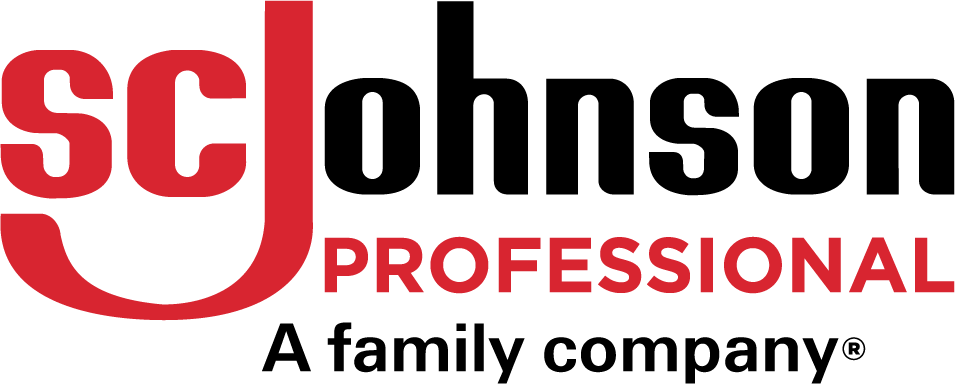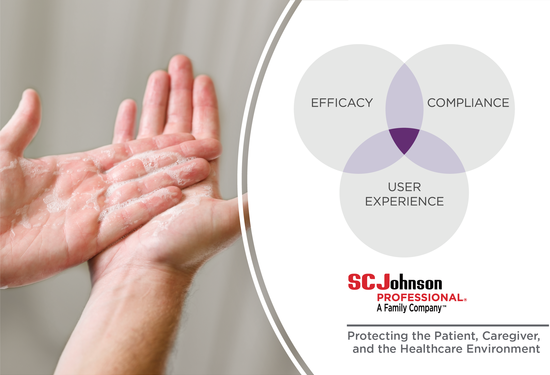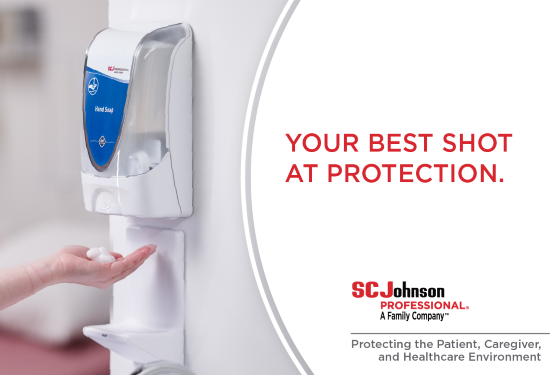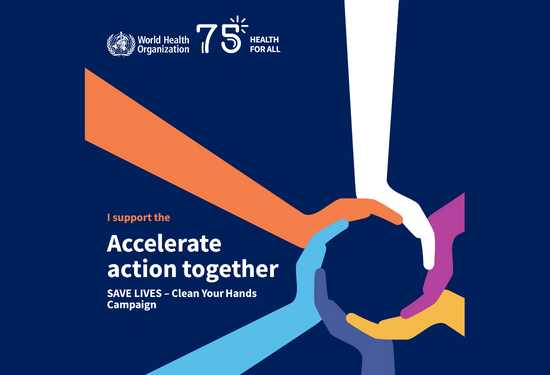Flu Season Reminders to Help Slow the Spread of Infection in Healthcare Facilities
By SC Johnson Professional Healthcare
Influenza, often referred to as “the flu,” is a well-known global virus. According to the World Health Organization (WHO), every year, there are an estimated 1 billion cases worldwide[1]. As we continue into flu season, there are proactive steps that infection preventionists can take to help reduce the spread of illness-causing organisms in healthcare facilities. Developing and enforcing a program that includes effective handwashing products, EPA-registered cleaning and disinfectant products that kill viruses and bacteria, along with educational efforts to encourage proper hygiene protocol can help decrease the spread of viruses and healthcare associated infections (HAIs).
Enforce Hand Hygiene Compliance
Healthcare-associated influenza infections can occur in any healthcare setting and are most common when influenza is also circulating in the community[2]. Hand hygiene compliance plays a critical role in reducing HAIs. Washing hands with soap and water is the best way to kill germs[3]. Studies have shown that handwashing can prevent 1 in 3 diarrhea-related sicknesses and 1 in 5 respiratory infections, such as the cold or the flu[4].
Unfortunately, while it’s widely known that hand hygiene is the most effective way to help prevent HAIs, the Centers for Disease Control (CDC) says that on average, healthcare providers clean their hands less than half of the times they should[5]. The CDC recommends posting visual signs and posters at entrances and other strategic places in healthcare facilities such as waiting areas, elevators and cafeterias to provide reminders how and when to perform hand hygiene[6]. In addition, regularly communicate and reinforce hand hygiene compliance protocol with staff. This can be done with daily reminders from leadership and signage in staff areas including breakrooms, restrooms and locker rooms. Also, consider implementing a hand hygiene monitoring system that captures reliable, real-time behavior insights with electronic compliance monitoring. These systems can provide employees with performance metrics that help them impact their compliance meaningfully.
Provide Easy Access to Hand Hygiene Products
Promote healthy hand hygiene by making handwash and sanitizer easily accessible and convenient throughout the facility for both staff and visitors. The WHO’s “My 5 Moments for Hand Hygiene” identifies the key moments when healthcare workers should perform hand hygiene. These include before touching a patient, before clean/aseptic procedures, after body fluid or exposure risk, after touching a patient and after touching patient surroundings[7].
Place handwash dispensers containing high-efficacy product in areas that require handwashing, including washrooms, patient areas and kitchen areas. In addition, place hand sanitizing stations throughout the facility in patient areas and other places where soap and water are not available. Since frequent handwashing and sanitizing is required in healthcare facilities, look for hand hygiene products with built-in moisturizers to help protect the skin from additional dryness.
Review and Stock Effective Cleaning Products
Heading into flu season, review all cleaning product labels, check expiration dates and store a sufficient amount of product to ensure preparedness for daily cleaning. In addition, check to ensure disinfectants are proven to kill viruses including influenza, norovirus and SARS-CoV-2. Flu season is a great time to reinforce training and cleaning procedures with environmental services team members to ensure they are using cleaning products and tools correctly. If staff are well trained and informed, proper techniques can help reduce illness-causing organisms from spreading, which ultimately can decrease the risk of HAIs. Ensure users understand application instructions for every product used. Kill claims vary and many products require a specific dwell time to effectively kill viruses such as influenza.
The flu season can feel stressful for infection preventionists and environmental services teams, but there are proactive steps to take to reduce the spread of germs. Preparedness that includes effective cleaning and hand hygiene products combined with educational efforts can help reduce the spread of infection.



